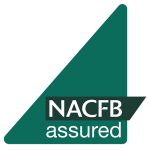A bridge loan is a type of short-term loan that is used to “bridge” the gap between purchasing a new property and selling an existing one. The loan is typically secured by the existing property and is used to finance the deposit and completion costs for the new property.
The idea is that the existing property will be sold quickly, and the proceeds from the sale will be used to pay off the bridge loan. These loans are usually offered at a higher interest rate and have shorter term than a regular mortgage.
Bridging loan for property development
A bridging loan for property development is a short-term loan that is used to finance the acquisition and renovation of a property that will be used for development. This type of loan is typically used by property developers who need to purchase and renovate a property quickly in order to begin a development project.
The loan is usually secured by the property that is being developed and is used to finance the purchase of the property, as well as the costs of the renovation or development work. The loan is typically repaid when the development is completed and the property is sold or refinanced with a long-term loan.
Bridging loans for property development can be a good option for developers who need to act quickly, but they can also be more expensive than traditional long-term loans due to the higher interest rates and shorter terms.
How does a bridge loan work?
A bridge loan, also known as a bridging finance, is a short-term loan that is used to “bridge” the gap between purchasing a new property and selling an existing one. The loan is typically secured by the existing property and is used to finance the purchase ofhe new property. The idea is that the existing property will be sold quickly, and the proceeds from the sale will be used to pay off the bridge loan.
Here’s how it works:
- The borrower applies for a bridge loan and provides the lender with details about the existing and new properties.
- The lender assesses the value of the existing property and the likelihood of it selling quickly.
- If the loan is approved, the borrower is advanced the funds needed to purchase the new property.
- Once the existing property is sold, the proceeds are used to pay off the bridge loan.
- The loan is typically repaid within 12 months, although some lenders may offer longer terms.
Bridge loans in the UK can be offered by specialist bridging finance lenders, or by some high street banks, and can be more expensive than traditional mortgages due to the higher interest rates and shorter terms.
Do you need finance for your property portfolio?
Or call and speak to one of our specialist brokers on 0800 316 2224
Bridging loan example
Here’s an example of how a bridge loan might work:
John wants to purchase a new property for £300,000, but his existing property is not yet sold. He applies for a bridge loan from a lender and provides details about both properties. The lender assesses the value of his existing property and decides to advance him a loan of £200,000, which John uses to purchase the new property.
The terms of the loan are:
- Interest rate: 1% per month
- Loan term: 6 months
- Arrangement fee: 2% of the loan amount
- Exit fee: 1% of the loan amount
The total cost of the loan is:
- Interest: £200,000 x 1% x 6 = £12,000
- Arrangement fee: £200,000 x 2% = £4,000
- Exit fee: £200,000 x 1% = £2,000
- Total cost: £18,000

John’s existing property is put up for sale and he is able to find a buyer within 3 months. The property sells for £250,000, and John uses the proceeds to pay off the bridge loan and any additional costs. In this scenario, the bridge loan allowed John to purchase the new property before selling his existing one. He was able to move into his new home sooner than if he had waited for his existing property to be sold. However, the total cost of the loan was high, so it’s important to consider whether this is a financially viable option before committing to a bridge loan.
What alternative are there to bridging loans?
There are several alternatives to bridging loans that can be considered, depending on the borrower’s specific needs and circumstances. Some of the most common alternatives include:
- Traditional mortgages: A traditional mortgage is a long-term loan that can be used to purchase a new property. However, the application process can be lengthy and may not be suitable if the borrower needs to act quickly.
- Second charge mortgages: Also known as a home equity loan, this type of loan uses the borrower’s existing property as security. The loan can be used to finance a new purchase, but the interest rate may be higher than a traditional mortgage.
It’s important to consider the pros and cons of each alternative and to carefully compare the interest rates, fees, and terms before making a decision. It may also be a good idea to consult with a financial advisor or mortgage broker before making a decision.




















